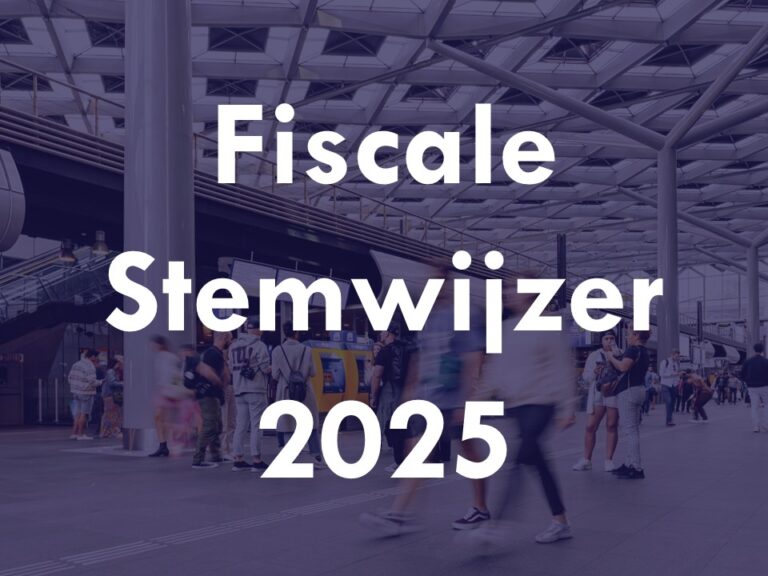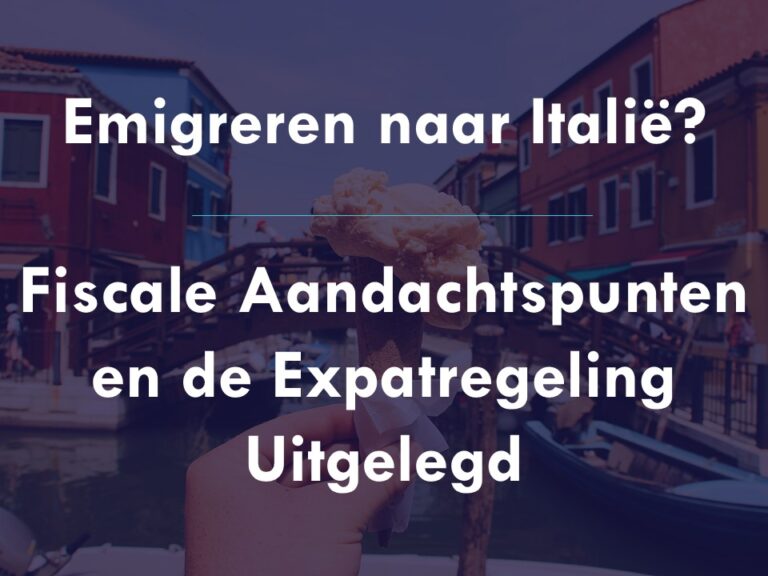Picture this: a customer in Spain orders a designer bag from your webshop based in the Netherlands. You ship it promptly, the payment is processed, and the sale is recorded. But a week later, the bag is back on your doorstep. Maybe it didn’t match the online photos. Maybe it was an impulse purchase. Whatever the reason, it’s a return — and with it comes a new question: how do you handle VAT?
Returns are the silent disruptors of modern cross-border commerce. For every sale that goes smoothly, another ends with a refund, a restocking process, and a potential VAT correction. And in the EU, where goods often cross borders and tax rules vary from one member state to the next, the VAT treatment of returned goods becomes especially complex. Whether you’re selling to consumers or businesses, your ability to navigate VAT on returns can affect compliance, cash flow, and even customer satisfaction.
This article provides a practical overview of how to handle VAT when goods are returned within the EU. It distinguishes between B2C and B2B sales and outlines three common return situations: when goods are sent back to the supplier, when they remain in the customer’s country, and when they are moved on to another EU country.
#1. Returns in B2C Transactions
VAT-treatment of the initial supply
When goods are sold and subsequently returned, the initial supply to the B2C customer is treated as if it never took place. As a result, this transaction does not give rise to any VAT consequences but rather requires a correction if the supply is already reported. If the supplier uses the One Stop Shop (hereinafter: “OSS”), the return must be reported as a correction in the OSS return of the quarter in which the return took place.
- If the sale and return happen within the same VAT return period, no reporting is required—neither the sale nor the return. The supplier must issue a credit note to the customer for the returned goods (including VAT).
- If the sale and return fall in different periods, the correction must be made in the OSS return for the period in which the return occurred. And at the latest 3 years from the date the supplier was required to submit the original OSS return.
VAT-treatment of the second movement
To complete the return process, the goods must either be transported back to the company or moved to a different buyer. This physical relocation of goods triggers VAT consequences, even without a corresponding supply. Below is an explanation of the VAT treatment for different scenarios, accompanied by corresponding illustrations.
- Case 1. Goods returns to the supplier: If the goods are returned to the supplier, it is generally accepted that this return does not give rise to any VAT implications. Apart from the correction of the initial supply, as noted above, no additional VAT compliance obligations arise in this scenario.

- Case 2. Goods stay in the state of the first customer: If the goods are not returned but remain in the customer’s country and are subsequently sold to a new customer there, the supplier must treat this as a new transaction. In practice, such cases often involve more than three parties. For example, the first consumer might send the goods to a party related to the supplier, such as the supplier’s logistics service provider. This related party, acting on the supplier’s instructions, would then forward the goods to the next customer. A detailed scenario will be addressed in the Case Example. For now, we will consider only the VAT treatment where the first consumer sends the returned goods directly to the next customer. The VAT treatment depends on the nature of the new customer:
- Case 2.1: If the goods are sold to a B2B customer with a valid VAT number, the transaction qualifies as an intra-Community supply. The sale is zero-rated in the Member State of departure – the country from which the goods originally come, and the customer reports an Intra Community Acquisition in their own Member State.
- Case 2.2: If the goods are sold to a B2C customer, the transaction falls under the rules for EU distance sales. The supplier must charge VAT of the Member State where the customer is resident. If the supplier uses the OSS scheme, this VAT can be reported and paid via the OSS return.
As long as the supplier’s intention is to resell the goods in that country within a short timeframe, and this resale takes place promptly, the VAT treatment remains relatively straightforward—either as an intra-Community supply or as a distance sale, depending on the customer type.

- Case 3. Goods move to another EU-state: In situations where returned goods are forwarded to another EU Member State, the VAT outcome depends in part on how quickly a new sale takes place. If the goods are promptly sold to a customer in the destination country, the transaction may be treated as a straightforward:
- Case 3.1: Intra-Community supply if the new customer is a B2B buyer with a valid VAT number. The sale is zero-rated in the Member State of departure – the country from which the goods originally come, and the customer reports an Intra Community Acquisition in their own Member State.
- Case 3.2: EU distance sale if the new customer is a B2C buyer. The supplier must then charge VAT in the customer’s Member State, either by registering locally or by using the OSS scheme.
- However, if the goods are held in the destination country without a clear or immediate sale, the supplier is likely required to report a cross-border movement of own goods. This is treated as a deemed intra-Community supply in the country of dispatch and a deemed intra-Community acquisition in the country of arrival, triggering VAT reporting obligations in both jurisdictions. For the sake of clarity and readability, this scenario will be left out of this article.

#2. Returns in B2B Transactions
VAT-treatment of the initial supply
For B2B transactions, VAT treatment is guided more by formalities and timing than by consumer status. By returning the goods by the initial buyer, he original supply should be reversed. As a result, the return itself does not create new VAT consequences, but it does require a correction if the original supply has already been reported.
- If both the sale and the return occur within the same VAT return period, no transaction needs to be reported in the EC Sales Listing (ESL).
- If the sale and return occur in different reporting periods, the return must be included in the ESL of the later period as a negative value, effectively correcting the original supply.
- In some Member States such as Germany, Italy, Belgium and France, the customer is also expected to cancel the corresponding intra-Community acquisition in their VAT return.
VAT-treatment of the second movement
- Goods returns to the supplier: If the goods are returned to the supplier, it is generally accepted that this return does not give rise to any VAT implications. Apart from the correction of the initial supply, as noted above, no additional VAT compliance obligations arise in this scenario.
- Goods stay in the state of the first buyer: As goods remain in the Member State of the original customer, in principle, the seller must report a transfer of own goods. However, if only a short period has passed between the initial dispatch and the resale to a new customer, the first supply may be disregarded. In that case, it is general accepted that a direct intra-Community supply to the new customer takes place.
- Goods move to another EU-state: When goods are moved from the customer’s country to a third EU Member State, the VAT implications become more complex. If the goods are sold directly to a new customer in the destination country, and the time between the original dispatch and the new sale is short, the initial supply may be disregarded. In that case, the supplier may treat the transaction as a single intra-Community supply from the original Member State to the final destination country. However, if the goods are merely stored or held in the new location without a known buyer, the supplier is generally required to report a transfer of own goods. For simplicity, this article does not cover that scenario. In either scenario, accurate documentation and careful timing are crucial to prevent double taxation or mismatches in VAT reporting.
#3. Extra Considerations
The VAT treatment of return-related shipping or handling fees also requires attention. If the customer is required to pay for return shipping, these charges may constitute a separate supply of services. Where the service relates purely to transport, VAT is due in the country of departure. If the charge covers broader handling or processing, it may be taxed in the supplier’s country. Businesses should be cautious in labelling such fees as “damages,” since European case law tends to treat agreed charges in case of cancellations as taxable compensation for services.
Businesses using the small-business threshold for EU distance sales (€10,000) must also monitor returns carefully. Returns can push total cross-border sales below the threshold, but only retroactively. The decisive moment for determining where VAT is due is the moment when VAT becomes chargeable — typically when the customer accepts the goods or payment is received. If returns occur after that point, the sales may still count toward the threshold even if they are later cancelled.
If sales are made through online platforms (such as marketplaces), and the platform is deemed liable for VAT (e.g., for non-EU sellers), the platform is also responsible for reporting VAT corrections on returns. However, the supplier remains responsible for handling VAT on return-related services such as shipping or restocking. Platforms are not considered suppliers for these services and thus cannot report them in OSS on behalf of the seller.
#4. Case Example: Return Processing via Italy
Consider the following case. A customer purchases a swimsuit via an online store and the item is shipped from the company’s warehouse in the Netherlands. The customer, located elsewhere in the EU, decides to return the item — not to the Netherlands, but to an inspection facility in Italy. From there, two scenarios can happen. If the item is in good condition, the customer is refunded, and the item is returned to the Netherlands. If the item is damaged or deemed unsellable, no refund is issued, and the item is either discarded or repurposed (e.g., used as a gift).
From a VAT perspective, if the customer is refunded, then the original transaction is treated as if it never occurred — the sale is nullified for VAT purposes. Provided the return and the subsequent movement of goods back to the Netherlands both take place within the same VAT return period, these movements will not be reflected in the VAT return.
However, if the returns occur across different VAT periods, then the fiscal treatment becomes more nuanced. It is deemed that a supply took place from the Dutch supplier to the Italian inspector handling the returns. This is treated as an intra-community supply from the Netherlands to Italy, reported at 0% VAT on the Dutch VAT return and listed in the EC Sales List. The Italian inspector must then issue a corresponding invoice back to the Dutch supplier for the item returning back to the Netherlands, referencing the Dutch VAT number.

If, on the other hand, the customer does not receive a refund — for example, because the item is damaged or unsellable — then the original supply remains valid. The VAT remains due in the customer’s country and must be reported under the OSS return. The return to the Italian facility does not change this VAT treatment and creates no further compliance obligations for the supplier in the Netherlands.

This example illustrates how return logistics and inspection hubs within the EU can add operational efficiency — but also introduce VAT consequences that must be carefully managed through proper timing, documentation, and reporting. Whether returns are processed centrally or in decentralized facilities, it’s essential that businesses treat these movements not just as warehouse flows, but as VAT-relevant events.
Want to discuss? Plan a call with me – it’s on the house!
Returns are more than just a logistics concern — they are a VAT issue. Businesses selling cross-border within the EU should understand when a return requires a correction, when it triggers a new supply, and when it leads to a reportable intra-EU movement of own goods. The VAT outcome depends on three key factors: where the goods go, what the supplier intends to do with them, and how quickly a new transaction takes place.
In many cases, if the supplier acts promptly — by either returning the goods to their own Member State or reselling them to another customer — this can reduce VAT compliance burdens. Having an effective and well-thought-out returns strategy is not just operationally smart; it is also cost- and time-efficient from a VAT compliance perspective.





